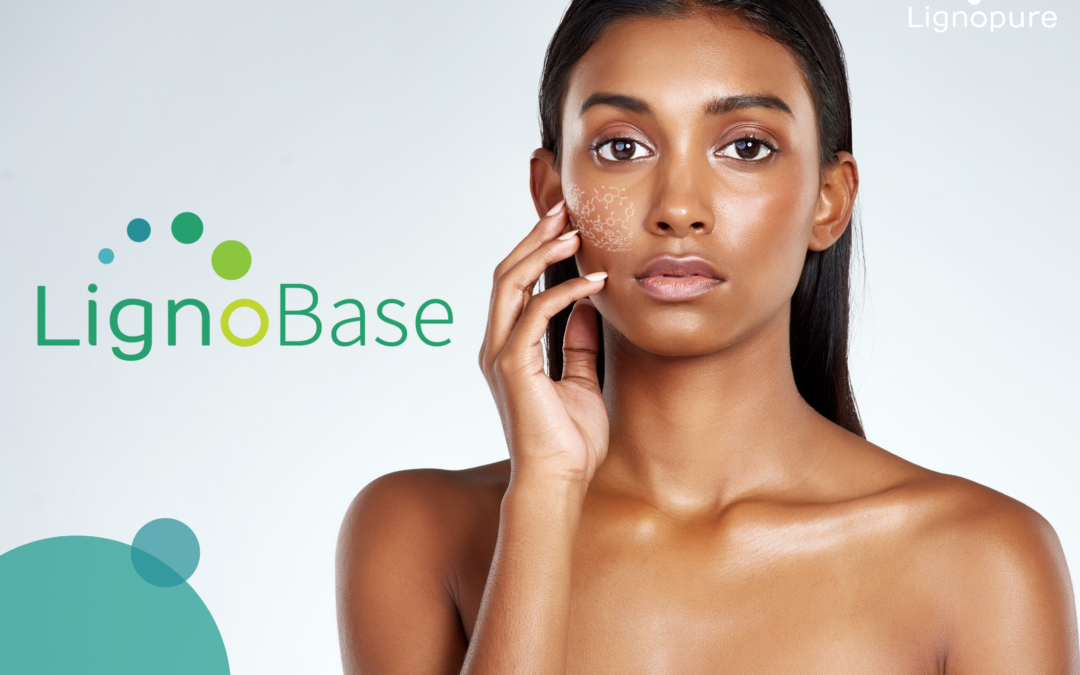
Written by: Juliana Carrizosa – Product Innovation Specialist at Lignopure
The skin is continuously exposed to several external oxidative conditions that arise from environmental pollutants such as smoke, smog, and solar UV radiation. This is of major concern since oxidative stress has been implicated in several skin conditions including skin cancer, photoaging, skin inflammation, among others. For this reason, including antioxidants in a daily cosmetic routine is so important.
What are free radicals and what is the concern around them?
Free radicals are highly reactive molecules with unpaired electrons that can damage various cellular structural membranes, DNA, proteins, and lipids in living systems as well as in several food and cosmetic products.
In the case of personal care products, many ingredients are easily oxidized by atmospheric oxygen. This results in unpleasant-smelling and skin-irritating oxidation products such as peroxides, which turn the products “rancid” and therefore unusable. Particularly affected by this oxidation process are preparations containing fats and waxes with polyunsaturated fatty acids.
Antioxidants to the rescue!
Antioxidants are molecules that neutralize free radicals by terminating the chain reaction that causes oxidation before vital compounds are damaged. Therefore, these materials counteract the action of free radicals, which in the form of cosmetic ingredients, make them great allies for the cosmetic and personal care industry.
Based on their function, antioxidants can be divided into primary or natural, and secondary or synthetic antioxidants. Primary antioxidants comprise mineral antioxidants, vitamins, and especially plant secondary metabolites, where polyphenolic compounds play a crucial role. Some examples of secondary antioxidants are butylated hydroxyanisole (BHA), butylated hydroxytoluene (BHT), however, synthetic antioxidants are not approved for use in certified natural cosmetics.
LignoBase: Unlocking the protective power of nature against oxidative stress
On the other hand, plant-derived antioxidants have become of special interest, not only due to their wide availability in nature and renewable character but also because of their high biological activity. This is the case of lignin, an abundant natural polyphenols source, which has been until now underutilized. This is exactly what is about to change thanks to Lignopure’s patented particle technology that upcycles this amazing natural material and transfers its antioxidant protective properties into our new cosmetic ingredient line called LignoBase.
The antioxidant activity of this upcycled ingredient line is mainly determined by lignin’s chemical structure, particularly its naturally present hydroxyl groups and radical-stabilizing aromatic rings, which make all three LignoBase variants, a very efficient radical scavenger by transferring hydrogen atoms to these unstable molecules to counteract their oxidative stress. Thanks to this action, our novel LignoBase ingredients have shown effective protection of human skin cells against intracellular reactive oxygen species, being competitive with the standard epigallocatechin gallate (ECGC). In addition, LignoBase also acts as a natural antioxidant for formulations by stabilizing actives and other ingredients prone to oxidation.
To sum up, LignoBase is the perfect natural upcycled ally to protect the skin from harmful oxidative processes and, therefore, prevent undesired skin stress conditions while at the same time protecting personal care formulations from oxidation to maintain their performance and efficacy.
References
Kusumawati, I., Indrayanto, G. (2013). Natural antioxidants in cosmetics. Studies in natural products chemistry, 40, 485-505.
Michalak, M. (2022). Plant-derived antioxidants: Significance in skin health and the ageing process. International journal of molecular sciences, 23(2), 585.
Kabir, A.S., et al. (2019). Development of Lignin-Based Antioxidants for Polymers. In: Production of Materials from Sustainable Biomass Resources. Biofuels and Biorefineries, vol 9. Springer, Singapore. https://doi.org/10.1007/978-981-13-3768-0_2

